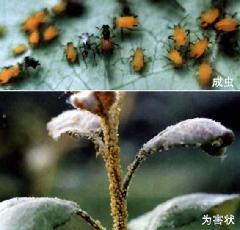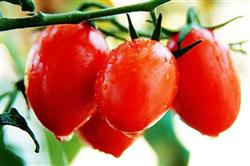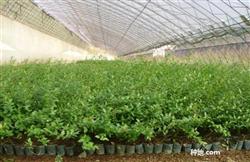What pests should be controlled in blueberry cultivation?

What pests should be controlled in blueberry cultivation? What is the main harm? Also ask the netizens who know to help introduce the common pests of blueberries, such as leaves, stems, roots, flowers and fruits, which hinder the growth and development of the tree, reduce the yield, reduce the commercial value of the fruit and even lose the commercial value of the fruit. Therefore, the farming network has sorted out the pests that need to be controlled in the blueberry planting process, which are listed in detail below for netizens' reference. 1. The main pests that harm the flowers and buds of blueberries: 1. Aphid mites are one of the most important pests that endanger the unsprouted buds of blueberries. the insect is so small that it is difficult to find it with the naked eye, and the aphid mites live in the buds most of the time. The occurrence of aphid mites can be distinguished from its harmful symptoms: the buds are rough, the vegetations turn red, sometimes the young fruits appear red spots, when the damage is serious, the buds die and the yield decreases. The method of control is to spray malathion 0.62kg/1200L aqueous solution per hectare after fruit harvest, and then spray it again after 6 or 8 weeks, or apply malathion oil solvent after fruit harvest. 2. The main harmful symptoms of root-cutting caterpillar and inchworm are wormholes in flower buds, causing flower buds to turn red or die. Generally speaking, these two kinds of insect pests are less harmful and will not cause yield loss. The control methods can be controlled by 2000 times of diflubenzuron or 1500 times of efficient cyanogen chloride before blueberry flowering. 3. Cranberry weevil, one of the common pests in northern blueberries, is about 3.15cm long and dark red. It is harmful to drill out of the bud when the bud is just inflated in early spring. Mainly caused by flower buds can not open, leaf buds appear abnormal clusters of leaves. The control method can be used in blueberry leaf bud green and flower bud whitening with 50% phoxim 1000 times, 40% isocarbophos 1000-1500 times crown spray, all have better control effect. 2. The main pests that harm blueberry fruit: 1. Blueberry maggot is the most serious and common pest that harms northern blueberry fruit. Adults lay eggs under the skin of mature fruit, which makes the fruit soft and loose and loses commercial value. Because the occurrence of blueberry maggot adults lasts for a long time, insecticides need to be sprayed frequently. Monitoring the number of larvae by trapping method is effective to determine the spraying time and times. Spraying imidophos, malathion and Guisen on leaves or soil had better control effect on blueberry maggots. 2. Plum weevil is another important pest that harms blueberry fruit. The adult worm is about 0.4cm, which is eaten into a crescent-shaped depression on the surface of the green fruit and lays an egg. One adult can lay 114 eggs. The larvae drill into the fruit and eat the flesh, causing the fruit to mature prematurely and fall off. The main characteristics to distinguish the occurrence of plum weevil are the crescent-shaped depressions on the fruit surface and the wilted fruit falling off before the fruit is ripe. The control method is to apply parathion after pollination when the fruit is about 0.4cm in diameter. 3. Cranberry maggots lay eggs at the calyx end of the green fruit. The larvae drill into the fruit from the stalk connected to the fruit and close the entrance until the flesh is eaten. Then drill into another fruit and continue to do harm. One larva can harm 3 or 6 fruits. The damaged fruits can be filled with insect dung at the entrance of the larvae, and the damaged and undamaged fruits are often netted together. Damaged fruits are often precocious and wilted. Parathion, Guisen and imidophos can be used to control cranberry maggots. 4. Cherry maggots are pests that harm blueberry fruit. The larvae are born in the calyx of the fruit and eat the fruit until the larva is half ripe, and then transfer to the adjacent fruit to continue the damage. In the process of transfer, the larvae are not exposed, which eventually causes the two damaged fruits to stick together. Spraying parathion and imidophos can effectively control this pest. Third, the main pests that harm blueberry leaves: leafhoppers are the most common and serious pests in blueberry leaves. The leafhopper is brownish gray, wedge-shaped and about 0.074cm in shape. Leafhopper does less direct damage to blueberry leaves, but the bacteria carried and transmitted can cause serious poor growth. The first spray to control blueberry maggots can control leaf tremor, but a second spray is needed to control the occurrence of the second and third generation larvae. Leaf borer and leaf roller caused less economic loss to blueberry, and two main species have been found. Its damage is mainly caused by the larvae rolling up its harmful leaves. Spraying insecticides to control fruit pests can effectively control leaf borer and leaf borer. 4. The insect pests that mainly harm the stem of blueberry: 1. The shell insect is the main pest that harms the stem of blueberry, which can cause the weakening of tree potential, the decrease of yield and the shortening of life. If the pruning is not timely, the damage is often serious. The control method is to spray 3% oil solvent before blueberry bud germination. 2. The pest that harms the stem of blueberry is stem stem borer. It lays eggs at the stem tip of the branch, and the larvae nibble on the stem tip tissue, resulting in the death of the growth point. Spraying insecticides to control fruit pests can effectively control the adults of stem tip borer. How about the planting method of blueberry seedlings? the environment is suitable for growing blueberries.
- Prev

How is the environment suitable for growing cherry tomatoes?
How is the environment suitable for growing cherry tomatoes? Please also know the netizens to help introduce the cherry tomato fruit bright red meat tender, high sugar content, unique flavor, cool and delicious, can promote thirst, stomach stagnation, rich in a variety of vitamins advantages, farming network sorted out the growth habits of cherry tomato, the following details.
- Next

How to plant blueberry seedlings?
How to plant blueberry seedlings? How many blueberry seedlings are planted in an acre of land? Please also know the netizens to help introduce that there are many farmers planning to plant strawberries, but do not know the planting season and methods of blueberries, so the planting network sorted out the planting methods of blueberry seedlings, listed below in detail for netizens' reference. One, blueberry.
Related
- Moge, come on! The staff of the peasant association in the producing area of cantaloupe were frightened when the crowd gathered.
- Causes and Solutions of low Fruit setting rate of Apple
- Symptoms and control measures of passion fruit virus disease
- Fruit growing lesson: how do apple orchards keep high yields?
- Can you build orchards in the mountains? What are the pros and cons?
- How to manage the coloring period of Crisson grape?
- This paper introduces the processing technology of two kinds of fig products.
- How much is a month for retired teachers in rural areas by 2020?
- How can strawberry planting increase sugar content? We should pay attention to management in many aspects.
- What are the cultivation techniques on how to improve the yield of golden fruit?

